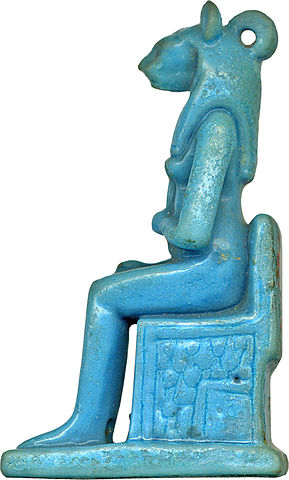Study of Ancient Egypt Might Improve 3D Printing of Ceramics

Lion Headed Goddess statuette made of Egyptian faience. Courtesy of Walters Art Museum.
Latest News
September 12, 2012
Say what you like about a liberal arts education, but it does produce well-rounded graduates. I took an Egyptology course in college and most people’s reaction to that news was, “Why?” Never mind that I’ve been interested in Egypt (and archaeology in general) ever since I first saw Indiana Jones. The ancient Egyptians were a remarkably technically advanced civilization.
It took scholars a long time to come up with a reproducible theory about how the ancient Egyptians created the pyramids. The people of the Nile also had some keen insights into medicine that wouldn’t reappear for centuries after the fall of the last kingdom. Even at this late date, it appears the ancient Egyptians still have things to teach us.
Around 7,000 years ago, the Egyptians figured out how to create a ceramic paste that would harden with firing into decorative designs called Egyptian faience. Archaeologists believe the main ingredients included crushed quartz or sand, and alkalis. Copper was used as a pigment and, when fired, the result was a fairly resilient product with an attractive blue-green color.
A team of scientists led by Professor Stephen Hoskins, director of the University of West England’s (UWE) Centre for Fine Print Research and David Huson, research fellow, have begun an investigation into using an Egyptian faience-like paste for the 3D printing of ceramics. The project has received funding for a three-year look into how to turn theory into a practical application.
“It is fascinating to think that some of these ancient processes, in fact the very first glazed ceramics every created by humans, could have relevance to the advanced printing technology of today,” said Hoskins. “We hope to create a self-glazing 3D printed ceramic which only requires one firing from conception to completion rather than the usual two. This would be a radical step-forward in the development of 3D printing technologies.”
Researchers will investigate three different possible methods of working with the faience-like material, based on the practices of ancient Egyptians. The first method is called application glazing and is similar to modern glazing practices; the second is efflorescent glazing, which employs the use of water soluble salts; and the last is cementation glazing, in which the object to be glazed is totally submerged in a firing container filled with the glazing powder, before being fired.
Below you’ll find a video featuring Professor Hoskins discussing the technology.
Source: UWE Bristol News
Subscribe to our FREE magazine, FREE email newsletters or both!
Latest News
About the Author
John NewmanJohn Newman is a Digital Engineering contributor who focuses on 3D printing. Contact him via [email protected] and read his posts on Rapid Ready Technology.
Follow DE






